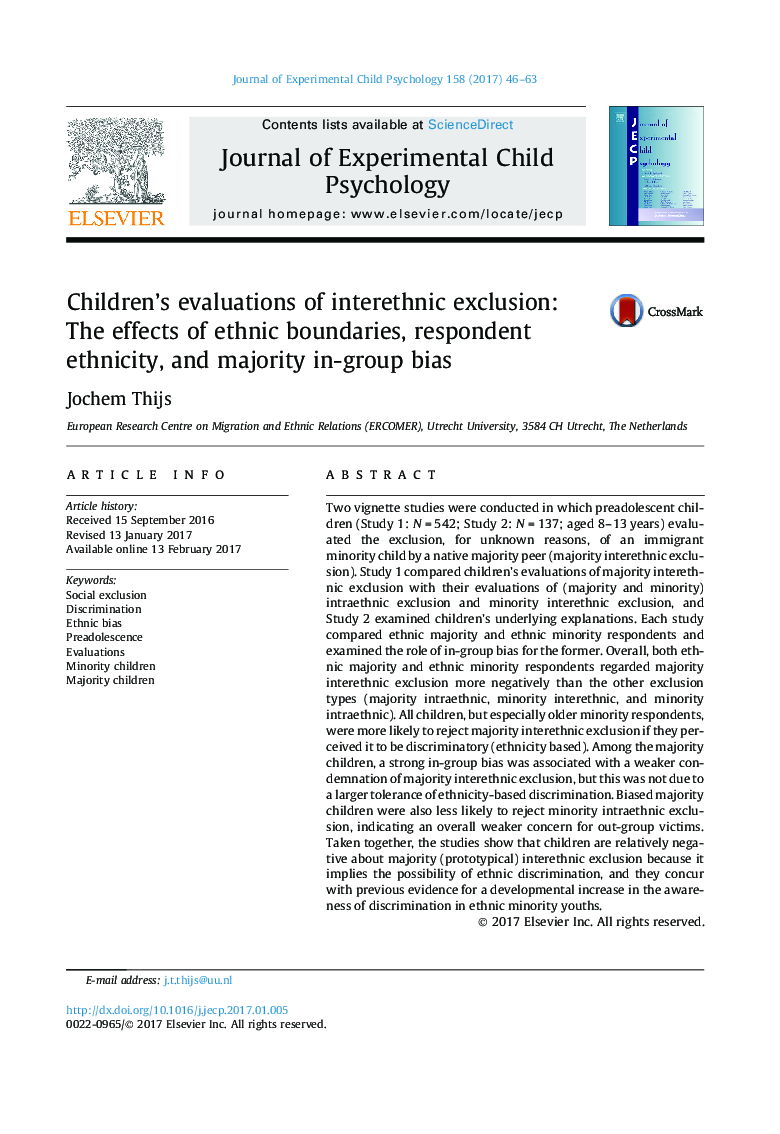| کد مقاله | کد نشریه | سال انتشار | مقاله انگلیسی | نسخه تمام متن |
|---|---|---|---|---|
| 5040019 | 1473454 | 2017 | 18 صفحه PDF | دانلود رایگان |
- Majority and minority children evaluated interethnic and intraethnic exclusion.
- Majority interethnic exclusion (prototypical) was least accepted.
- Older minority children had more problems with prototypical exclusion.
- Biased majority children were more tolerant of prototypical exclusion.
- Biased majority children were not more tolerant of discrimination.
Two vignette studies were conducted in which preadolescent children (Study 1: NÂ =Â 542; Study 2: NÂ =Â 137; aged 8-13Â years) evaluated the exclusion, for unknown reasons, of an immigrant minority child by a native majority peer (majority interethnic exclusion). Study 1 compared children's evaluations of majority interethnic exclusion with their evaluations of (majority and minority) intraethnic exclusion and minority interethnic exclusion, and Study 2 examined children's underlying explanations. Each study compared ethnic majority and ethnic minority respondents and examined the role of in-group bias for the former. Overall, both ethnic majority and ethnic minority respondents regarded majority interethnic exclusion more negatively than the other exclusion types (majority intraethnic, minority interethnic, and minority intraethnic). All children, but especially older minority respondents, were more likely to reject majority interethnic exclusion if they perceived it to be discriminatory (ethnicity based). Among the majority children, a strong in-group bias was associated with a weaker condemnation of majority interethnic exclusion, but this was not due to a larger tolerance of ethnicity-based discrimination. Biased majority children were also less likely to reject minority intraethnic exclusion, indicating an overall weaker concern for out-group victims. Taken together, the studies show that children are relatively negative about majority (prototypical) interethnic exclusion because it implies the possibility of ethnic discrimination, and they concur with previous evidence for a developmental increase in the awareness of discrimination in ethnic minority youths.
Journal: Journal of Experimental Child Psychology - Volume 158, June 2017, Pages 46-63
